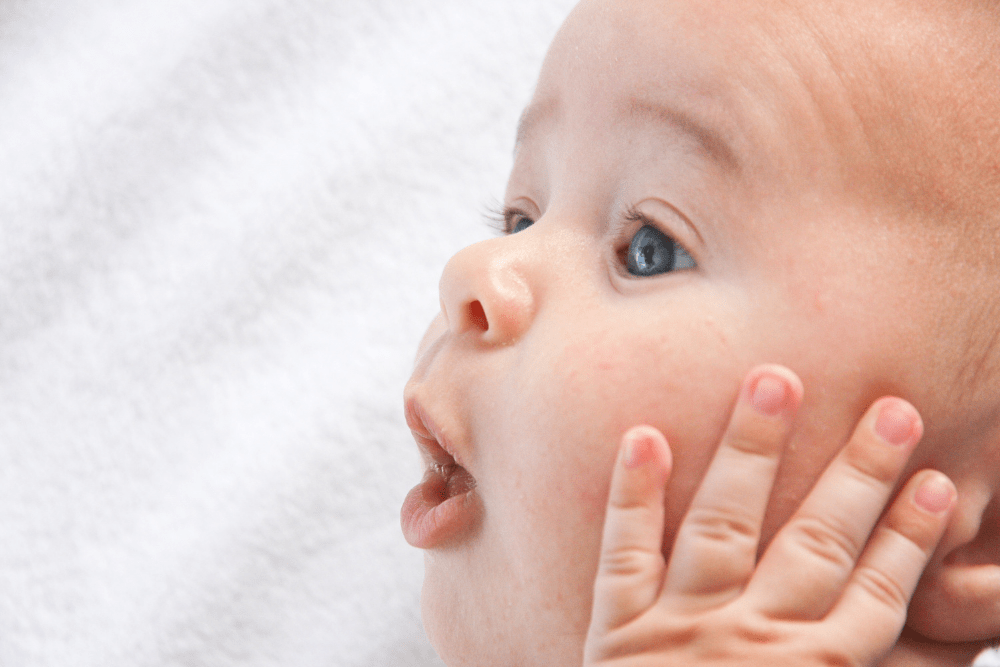
Some Common Irritants in Baby Skin Care Products
It is not uncommon for an infant to develop an allergic reaction to a whole range of baby products, and a little extra knowledge and insight can make it easier for you as a parent to identify the best and safest products to purchase. In the past, studies have revealed dangerous chemicals used on the surfaces of toys and other commodities such as multivitamins for babies. Even dietary proteins are known to cause many allergies in infants. There are concerns with topical lotions and creams that despite their good intentions, can actually irritate baby skin or worsen an existing skin condition. Let’s look first at the skin and its role in protecting infants from external toxins.
Functions of the Skin
- Acts as a physical barrier to chemicals, bacteria, fungi and viruses
- Protects us from physical impact
- Vital part of the immune system
- Protects us from UV rays
- Production of vitamin D after exposure to sunlight
- Absorbs nutrients and other substances topically
- Regulates body temperature
- Receives and communicates sensations to the brain
Skin is a vital organ
Our skin is an essential organ for detoxification and elimination, and when it comes in contact with foreign agents, becomes an important protector to the rest of the body. Keeping skin healthy requires maintaining hydration, oil and acidity levels, clean and unclogged pores, and essential nutrition through the diet. When any of these qualities are compromised, the ability of our skin to function normally is diminished. And while we often think of the potential benefits and dangers of substances we ingest through the mouth, we tend to forget that the skin is a major absorption organ too. The surface of baby skin is considerably more permeable than adult skin, so it will absorb an even greater amount of product applied to the skin. The reality is that babies absorb a lot.
For this reason alone it is worthwhile ensuring that your baby’s skincare products are as pure and toxin-free as possible. For example, mineral oil is used in many baby product lines, however not only does mineral oil introduce foreign toxins into a baby’s body, but it also sits on the skin and creates a mask through which the skin cannot breathe.
Looking after your baby’s skin may at some stage require you to work on their digestive health too because the other major absorption organ in a baby’s body is the gut. In the first month of life, as the digestive system develops, there is a marked lack of cohesion between cells, thus it is more open to the invasion of larger particles and proteins. Allergies in the skin can manifest as a result of irritations or disharmonies actually arising from the gut.
Some Common allergens in Baby Products
Mineral oil is a by-product of commercial processes involving crude oil, and when applied to the skin will produce an oily coating. As a moisturiser, it is barely effective because it is so poorly absorbed and does not allow the skin to breathe. This hasn’t stopped many commercial manufacturers from using it in their baby ranges though because it is cheap to produce. Natural emulsions such as beeswax, jojoba oil, sweet almond oil and sesame oil are a much better alternative. Knowing that just about anything that sits on a baby’s skin, is likely at some stage to enter their mouths via the fingers also should discourage one from purchasing products containing mineral oil… On ingredient lists, you will find mineral oil listed also as petroleum, paraffin or paraffin oil.
Natural Alternatives to Mineral Oil:
- Weleda Calendula Oil
- Weleda Calendula Lotion
- Sesame oil
- Sweet Almond oil
- Grapeseed oil
- Jojoba oil
- Evening Primrose oil
Propylene glycol is another derivative of mineral oil to look out for, as it has been linked to skin irritation, eczema, seizures and respiratory problems. It takes an infant over three times as long as it does an adult, to clear this chemical from the bloodstream so the risk of toxicity is much higher. It is for this reason that many substances deemed completely safe for use on adult skin are not suitable for babies.
Vitamin E is a soothing and softening addition to adult skin products. It’s not necessarily harmful to a baby unless they display an allergy to it. If your baby reacts to vitamin e, there are alternative skin nourishers such as sweet almond oil, jojoba oil or grapeseed oil. Infusions of herbs like Calendula and chamomile and nettle are also good skin tonics.
Recommended Natural Skin Soothers: Weleda Calendula Oil, Weleda Calendula Lotion
Perfumes and Fragrances
Perfuming is a highly sophisticated art form, and it has its place in the adult world. Its creative use of classic and aromatic plants is music to our olfactory ears. However, when it comes to perfumes in baby products, it’s helpful to arm yourself with some knowledge about what is safe and appropriate, and what is harmful.
As adults, with our well-developed detoxification systems (such as the gut, skin and liver) we are better able to manage chemicals in our bodies than are babies. A baby’s gut immunity takes many months to develop, and they absorb more through their highly permeable skin than adults. Selecting products that derive their fragrances from natural essential oils is the way to go!
Plant extracts and essential oils offer not only scent but other therapeutic benefits such as:
- killing infective bacteria
- reducing spasm and pain
- inducing sleep and healing damaged skin
There are naturally occurring fragrances such as those of the Calendula and Chamomile. Look out for perfumes that are added to products such as talcs and lotions in particular and stick with the mantra Pure and Organic is Best.
With a better understanding of the ‘baddies’ in commercial baby products, you can reduce the risk of toxicity, allergy and discomfort for your baby.
In summary, here are some tips to help you select better and healthier products for you and your baby:
- Read labels
- Choose natural skin care products that use organic and biodynamic ingredients, ensuring top quality raw materials that are free of nasty chemicals
- Avoid mineral oils and petrochemicals
- Avoid any products that contain artificial fragrances. Most naturally derived fragrances from flowers and herbs are fine.
- Look for organic and pure products that may also contain the label “Phthalate-free”. Also avoid placing plastic bottles in the microwave, as the transmigration of plastics under heat leads to chemicals being passed into the contents of the bottle.
- Patch test new products for potential allergic reactions by dabbing a small amount on the inside of your baby’s elbows.
- Live an organic lifestyle. A recent study showed changing to a biodynamic, organic diet can virtually eliminate all traces of phthalates in the body!
References
- Norman J. Barlow, Barry S. Mcintyre and Paul M.D. Foster 2004, Male Reproductive Tract Lesions at 6, 12, and 18 Months of Age Following in Utero Exposure to Di(n-butyl) Phthalate , 32; 79 Toxicol Pathol
- Sharpe RM., 2001, Hormones and testis development and the possible adverse effects of environmental chemicals, Toxicol Lett. Mar 31;120(1-3):221-32
- Chensheng Lu,1 Kathryn Toepel,2 Rene Irish,2 Richard A. Fenske,2 Dana B. Barr,3 and Roberto Bravo3 2006, Organic Diets Significantly Lower Children’s Dietary Exposure to Organophosphorus Pesticides, Environ Health Perspect. February; 114(2): 260–263.
- Wasmuth HE, Kolb H, 2000, Cow’s milk and immune-mediated diabetes, Proc Nutr Soc. 2000 Nov: 59(4): 573-9.
- Harrison LC, Honeyman MC. 1999, Diabetes. Cow’s milk and type 1 diabetes: the real debate is about mucosal immune function, Aug;48(8):1501-7
- Berthold Koletzko, MD, 2000, Complementary Foods and the Development of Food Allergy, Pediatrics Vol. 106 No. 5 pp. 1285
- American Academy of Pediatrics, (1997), “Inactive” Ingredients in Pharmaceutical Products, Pediatrics Vol. 99 No. 2, pp. 268-278
- Burks, W, (2003), Skin Manifestations of Food Allergy, Pediatrics Vol. 111 No. 6, pp. 1617-1624
Revised on 3rd December 2021


Recent Comments